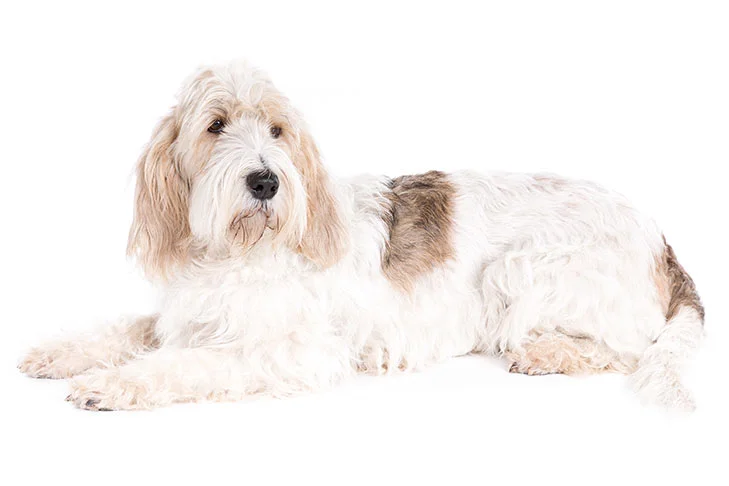The French scenthound known as the Grand Basset Griffon Vendéen. GBGVs are busy dogs who don’t get easily tired, yet they are moderately energetic and never easily stressed. Let’s talk about the name first. Grand-Bah-SAY Gree-FOHN VON-day-uhn is how it is pronounced and roughly translates to “Large, low, shaggy dog of the Vendee.” Now, let’s take a look at the dog: He is a sweet-faced, long-eared fellow with a shaggy coat whose mustache, beard, and profuse eyebrows suggest the look of a worldly but amiable Frenchman. The burly, solidly built bruiser that lurks behind the Grand’s Old World allure is deceptively swift and light-footed. These larger-than-life hunters’ bravery and tenacity are the stuff of Gallic legend.
Grand Basset Griffon Vendéen
Average sizes and life
expectancy of the breed.
Height
15.5 -18 inches
Weight
40-45 pounds
Life Expectancy
13-15 years
Breed Traits & Characteristics
About the Breed

Owning a dog is not just a privilege; it’s a responsibility. They depend on us for, at minimum, food and shelter, and deserve much more. When you take a dog into your life, you need to understand the commitment that dog ownership entails.
 Health
Health
Recommended Health Tests From the National Breed Club:
- Hip Evaluation
- Ophthalmologist Evaluation
 Grooming
Grooming
 Exercise
Exercise
 Training
Training
 Nutrition
Nutrition
History
The Grand Griffon Vendéen, Briquet Griffon Vendéen, Grand Basset Griffon Vendéen, and Petit Basset Griffon Vendéen are the four griffon-coated French hounds that have evolved over the past 400 years.
French hounds evolved into the breeds they are now, in general, by adapting to the unique requirements of the regions in which they lived. A tough breed of dog with mental and physical stamina and a coat that could withstand brambles was necessary for the dense, thorny, and rocky area of the Vendeé. A slower hound was also necessary for lower-class hunters who did not own horses because it made it easier for them to keep up. They decided to shorten the dog’s legs, and through breeding and development, a low-set dog was produced. By the end of the 19th century, the French basset breeds had evolved to include the Basset Griffon Vendéen, which combines hardiness and a shorter leg.
The Club du Griffon Vendéen, which was established in 1907, recognized two variations of the Basset Griffon Vendéen, the Grand Basset Griffon Vendéen, and the Petit Basset Griffon Vendéen, after more work in obtaining the precise size and proportions needed to hunt various animals.
Although interbreeding between the Grand and Petit was not prohibited until 1977, the Grand had already been divided into its own standard and was thought of as a distinct breed by the 1950s.


